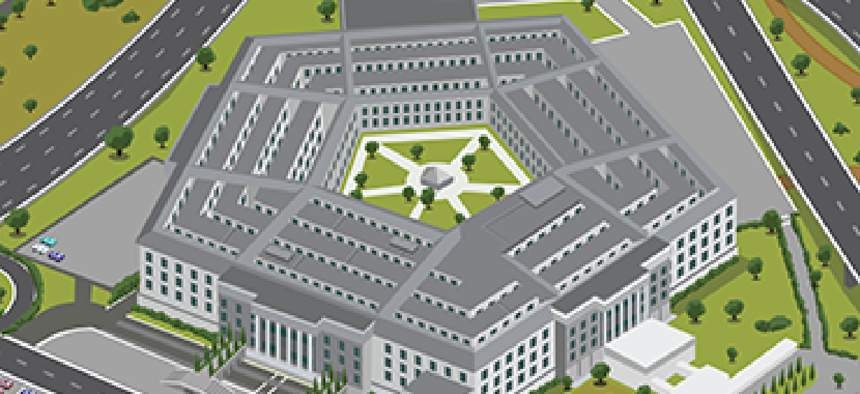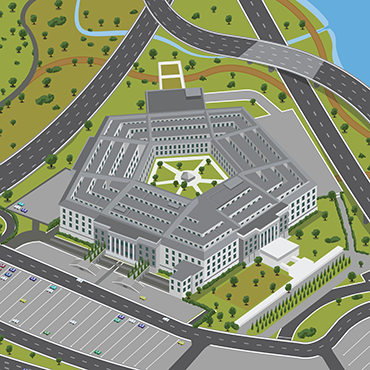Pentagon advisory board rolls out innovation plan

The Pentagon's Defense Innovation Advisory Board says bureaucratic and other barriers prevent the spread of existing innovation across the military.

The Pentagon's Defense Innovation Advisory Board said there is no shortage of ideas and innovation in the military, but what is lacking is the means to share and build on innovative ideas.
The board, which was created by Secretary of Defense Ash Carter in March, held its first public hearing to announce its interim findings and recommendations. Members include astrophysicist Neil deGrasse Tyson, Instagram Chief Operating Officer Marne Levine, Alphabet Chairman Eric Schmidt and Code for America founder Jennifer Pahlka.
Since its inception, the board has conducted a number of fact-finding trips to military facilities, bases and commands, including Nellis Air Force Base, Fort Bragg and Special Operations Command.
They have been speaking with top commanders across the services and trying to meet with ground-level troops and operators in what they describe as the "user research phase" of the board's process.
The board's first recommendation is that the Defense Department create a chief innovation officer position, according to board member, former Obama administration adviser and Harvard Law School Professor Cass Sunstein. That person would focus on sharing innovation activities and ideas across DOD and would create a defense innovation network to facilitate the cataloging, sharing and distribution of ideas.
The next recommendation is to focus on incentives to recruit the best cyber talent.
"In the tech community, we are blessed with an extraordinary pool of talent, but even we cannot meet all of the demands of technical expertise," Levine said. She added that tech companies are competing with one another across a global market of talent, and they have resources the federal government does not.
Levine said there should be a "digital ROTC" that offers tuition payment for those who want to pursue technology positions in the military. Students in those programs would focus on cyber operations and cyber defense.
She added that the military also needs to focus on retaining talent by making specialization both possible and attractive. She said the current system has the wrong incentives by emphasizing promotion rather than specialization.
In the coming months, she said the board should explore whether and how to create a science, technology, engineering and mathematics path at DOD.
Google Vice President Milo Medin said DOD needs to focus on protecting weapons systems from infiltration. Most systems are tested and certified before they come online, but ongoing testing using automated tools is needed. He added that Cyber Command and the National Security Agency should be directed to help perform ongoing analysis of the systems’ security.
Retired Adm. William McRaven, former commander of Special Operations Command, said there is a stark difference between innovation in Special Forces and other military units. There are more layers of bureaucracy in conventional forces, and combatant commanders need more freedom of movement to innovate.
In special operations, he said, "the distance…between the soldier in the foxhole and the decision-maker is really truncated."
He said commanders are able to make decisions and secure the resources necessary to try new ideas. That ability needs to be spread across other commands.
Reid Hoffman, executive chairman of LinkedIn, proposed the idea of having embedded software development teams within the commands. "This would enable commands and bases and other institutions to essentially deploy modern techniques and modern workflow," he said, and would allow DOD to operate the way industry does.
Richard Murray, professor of bioengineering at the California Institute of Technology, said the academic world can be a model for DOD innovation. At universities, students and professors are encouraged to design, prototype and test ideas and innovation within limited barriers. In particular, he said people in academia have the freedom to fail and learn from the experience, and that kind of freedom is needed in the military.
McRaven said bringing that attitude to the military will be a challenge. "Students and faculty drive innovation because they get grants to do that, they get grants to collaborate, so who is it that would provide those grants...to the soldiers in the field?" he asked.
If combatant commanders are given access to resources and can supply them below the corps level, innovation would ratchet up significantly, he said, adding that combatant commanders must be empowered to assume the risk for innovating.
Tyson expressed optimism for the future of DOD innovation based on the mindset of the millennial generation. "I see a level of scientific literacy and technological savvy and curiosity that I think is maybe without precedent in previous generations," he said.
"The U.S. will move backwards just by standing still" if it doesn't embrace the talent of that generation, he added.


